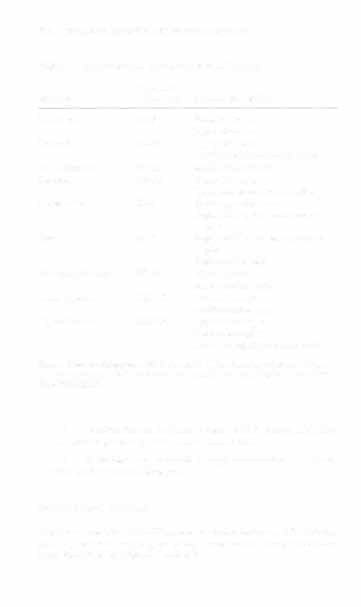i bc27f85be50b71b1 (155 page)
Read i bc27f85be50b71b1 Online
Authors: Unknown

Wound Manage 1998;44(8):24-31.
55. Kernstein MD. The scientific basis of healing. Adv Wound Care
1997;10(3);30-36.
56. Mulder GD, Brazinsky BA, Seeley JE. Factors Complicating Wound
Repair. In LC Kloth, KH Miller (cds), Wound Healing: Alternatives in
Management. Philadelphia: FA Davis, 1995;48-49.
57. Bahl SM. Nutritional Considerations in Wound Management. In PP
Gogia (ed), Clinical Wound Managcment. Thorofarc, NJ: Slack,
1995;73.
58. DeSanti L. Involuntary Weight Loss and the Nonhealing Wound. Adv
Skin Wound Care 2000;13(Suppl 1):"11-20.
59. Mulder GD, Brazinsky BA, Seeley JE. Facrors Complicating Wound
Repair. In LC Kloth, KH Miller (eds), Wound Healing: Alternatives in
Management. Philadelphia: FA Davis, 1995;50-51.
60. Keast DH, Orsted H. The Basic Principles of \Xlound are. Ostomy
Wound Manage 1998;44(8):28.
61. Lazarus G, Cooper DM, Knighton DR, et 31. Definitions 3nd guidelines
for assessment of wounds and evaluation of healing. Arch Dermatol
1994;"130:489-493.
62. Gallagher SM. Ethical dilemmas in pain management. Ostomy \Vound
Manage 1998;44(9):20.
63. Thomson PD, Smith DJ. What is infection? Am J Surg 1994;167(IA):
75-1 IS.
64. Fowler E. Wound infection: a nurse's perspective. Ostomy Wound Man·
age 1998;44(8):45.
65. Icrow S. Infection Control Perspectives. In D Krasner, 0 Kan (eds),
Chronic Wound Care: A Clinical Source Book for Healthcare Profes·
sionals. \Xlayne, PA: Health Management Publications, 1997;90-96.
66. Thomson PD, Smith DJ. What is infection? Am J Surg 1994;
167( IA):75-11S.
67. Fowler E. Wound infection: a nursc's perspective. Ostomy Wound Manage J998;44(8):47.
68. Gilchrist B. Infection and Culturing. In 0 Krasner, 0 Kane (eds),
Chronic \Vound Care: A Clinical Source Book for Healthcarc Professionals (2nd ed). \'V'ayne, PA: Health Management Publications, 1997;109-114.
69. Rodheaver GT. Wound Cleansing, Wound Irrigation and \Vound Disinfection. In D Krasner, D Kane (cds), Chronic \'V'ollild Care: A Clinical

BURNS AND WOUNDS 499
Source Book for Healthcare Professionals (2nd cd). Wayne, PA: Health
Managemcnr Publications, 1997;97-106.
70. Sussman G. Management of the \Vound Environment. In C Sussman, B
Bates-Jensen (cds), \'Vound Care: A Collaborative Practice Manual for
Physical Therapists and Nurses. Gaithersburg, MD: Aspen Publishers,
1998;212.
71. Fowler E. Wound infection: a nurse's perspective. Ostomy W'ound Manage 1998;44(9): 19.
72. Sieggreen MY, Maklebust JM. Debridement: choices and challenges.
Adv Wound Care 1997; I 0(2):32-37.
73. Feedar )S. Clinical Managemenr of Chronic Wounds. In LC Kloth, KH
Miller (cds), Wound Healing: Alternatives in Management. Philadelphia, PA: FA Davis, 1995;151-156.
74. Rodeheaver GT. Pressure ulcer debridement and cleansing: a review of
current literature. Ostomy Wound Manage 1999;45( 1 A Suppl):80S-
87S.
75. SCOtt RG, Loehne HB. Five questions-and answers-about pulsed lavage. Adv Skin Wound Care 2000; 13(3): 133-134.
76. Loehne HB. Pulsatile Lavage with Concurrent Suction. In C Sussman, B
Bates-Jensen (cds), Wound Care: A Collaborative Practice Manual for
Physical Therapists and Nurses. Gaithersburg, MD: Aspen Publishers,
1998;389-403.
77. Sussman C. Whirlpool. In C Sussman, B Bates-Jensen (cds), \'Vound
Care: A Collaborative Practice Manual for Physical Therapists and
Nurses. Gaithersburg, MD: Aspen Publishers, 1998;447-454.
78. Cuzell J, Krasner D. \'Vound Dressings. In PP Gogia. Clinical Wound
Management. Thorofare, N): Slack, 1995:131-144.
79. Feedar )S. Clinical Management of Chronic Wounds. In LC Kloth, KH
Miller (eds), Wound Healing: Alternatives in Management. Philadelphia: FA Davis, 1995;156-169.
80. Levin ML, O'Neal LW, Bower )H. The Diabetic Foot (4th ed.) St. Louis:
Mosby, 1993.
81. Philbeck TE, Whittington KT, Millsap MH, et al. The clinical and COst
effectiveness of externally applied negative pressure wound therapy in
rhe treatment of wounds in home healthcare medicare patients. Ostomy
Wound Manage 1999;45( II ):41-50.
82. Mendez-Eastman S. When wounds won't heal. RN 1998;61:20-23.
83. Sibbald RG. An approach to leg and foot ulcers. Ostomy Wound
Manage 1998;44(9):30.
84. Sibbald RG. Venous leg uicers. Ostomy Wound Manage 1998;44(9):63.

8
Gastrointestinal System
Jaime C. Paz
lntroduction
Disorders of the gastrointestinal (GI) system can have numerous
effects on the body, such as decreased ourridon, anemia, and fluid
imbalances. These consequences may, in turn, affect the activity tolerance of a patient, which will ultimately influence many physical therapy interventions. In addition, physical therapists must be aware of pain referral patterns from the GI system that may mimic musculoskeletal symptoms (Table 8-1). The objectives of this chapter are to provide the following:
I.
A basic understanding of the structure and function of the
G1 system
2. Information on the clinical evaluation of [he GI system,
including physical examination and diagnostic studies
3.
A basic understanding of the various diseases and disor-
ders of the GI system
501




502 AClITE CARE HANDBOOK FOR PHYSICAL THERAPISTS
Table 8-1. Gastroinrestinal System Pain Referral Patterns
Segmenral
Structure
Innervation
Areas of Pain Referral
Esophagus
T'Hi
Substernal region
Upper abdomen
Sromach
T6-IO
Upper abdomen
Middle and lower thoracic spine
Small inrestine
T7-IO
Middle thoracic spine
Pancreas
T6-IO
Upper abdomen
Upper and lower thoracic spine
Gallbladder
T7-9
Right upper abdomen
Right, middle, and lower thoracic
spine
Liver
T7-9
Right, middle, and lower thoracic
spine
Right cervical spine
Common bile duct
T6-10
Upper abdomen
Middle lumbar spine
Large intestine
T1 1 -L1
Lower abdomen
Middle lumbar spine
Sigmoid colon
TII-12
Upper sacral region
Suprapubic region
Lefr lower quadrant of abdomen
Source: With permission from we Soissonault. C Bass. Pathological origins of trunk
and neck pain: part I. Pelvic and abdominal visceral disorders. J On hop Sports Phys
Thcr 1990;12,194.
4. Information on the management of GI disorders, including
pharmacologic therapy and surgical procedures
5. Guidelines for physical therapy intervention In patients
with GI diseases and disorders
Structure and Function
The basic strucrure of the GI system is shown in Figure 8-1, with the
primary and accessory organs of digestion and their respective functions described in Tables 8-2 and 8-3.
